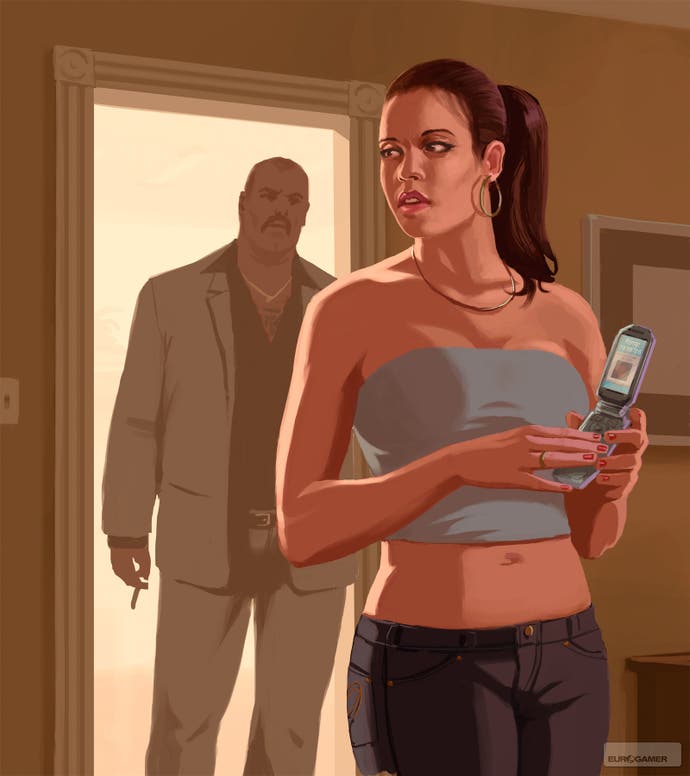Grand Theft Auto IV's Aaron Garbut: Part 1
Rockstar's art director on how GTA is made.
We don't do anything as pre-planned as designing the character around his journey through the story. The story always comes a little later in the day. At the point when the characters are developed we tend to be working more from feel and a short biography. We know the kind of character the player is supposed to be and we know a little of his background but we still don't know what he is going to do and say. So in that sense we have to work with broad strokes. Niko's face looks like he's had a past, that he has done and seen things most people haven't and that this has affected him. That's a good basis to build on.
A large part of this is down to programmers with a great eye. Most of what is going on with the water is very clever and creative code. The only influence we have as artists is obviously creating the world that's being reflected and then setting the lighting up to get this looking as nice as possible.
There are some lovely things going on in the water FX. From the way it reflects the surroundings and distorts that reflection, to the real-time physics on the surface (drop a car into the water and actual waves will distort the surface, which will affect nearby boats). There's even foam wherever the water gets shallower and simulations of viscosity around the edge. It's an insane level of detail, but you can see this when the water laps up and down a wooden post or jetties. All that is done in the FX code.
On top of that, we have global control for each time of day and each weather type to alter the way it fades with depth, which can help to make it look really murky. We can tint it subtly, but mainly it's the time of days, sunlight and sky colouring that has the biggest effect. But as artists we're just tweaking what is already at its base level a bloody nice effect.

I think the lighting system in general is pretty amazing. There are no hard limitations on the number of active dynamic lights around the player. The real-time shadows are working across every object and surface in the game with everything self-shadowing and casting onto everything else, there's ambient occlusion and emissive lighting on top of that. And then your standard next-gen shenanigans - light shafts, bloom, depth of field and motion blur, and of course it goes without saying everything's rendered with HDR.
The net result is a fully dynamic, real-time lighting system that is consistent across every surface in the game and has the subtlety and solidity of prebaked lighting. We've always had to make compromises in GTA's lighting because we had dynamic time of day. You make a trade-off with this essentially between variety and quality. There's a lot of stuff you simply can't do because the lighting needs to gradually fade between hours and weather types. With the system we have now though, there really aren't the same trade-offs. We get amazing almost prebaked quality combined with a constantly changing world. Where you can stand at the same spot and the combination of weather and moving time will mean you will probably never see it look the same twice.

We never reproduce real world locations. We take interesting or representative elements and create something new from them. It's about taking inspiration from real places and producing something that captures the essence of it. We're trying to take our impression of New York and keep it as that, an impression, not a laboured reproduction. I think that gives it more flavour, more intensity and in an odd way makes it feel more real. I've seen it in other games that set out to rebuild a city street by street, not only do compromises get made that favour realism over fun but a lot of the life is lost and all that's left is a hollow representation of a real place. I'd rather have the right vibe than an accurate roadmap.
Check back tomorrow for part two. Grand Theft Auto IV is due out on PS3 and 360 and will be released on 29th April. But then you knew that.
